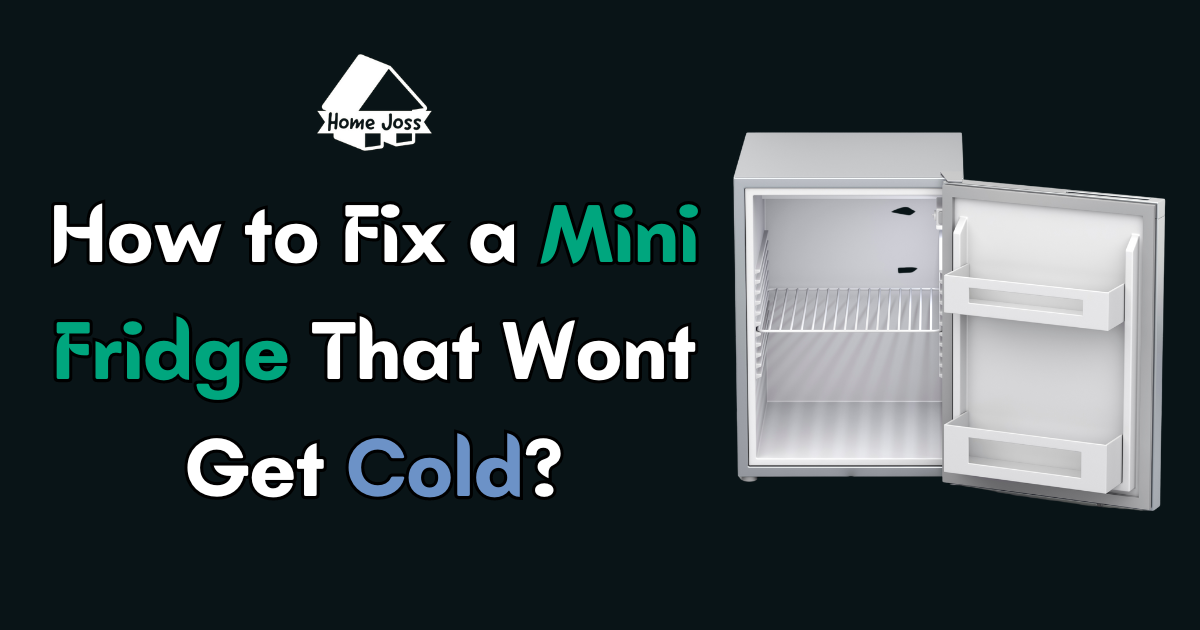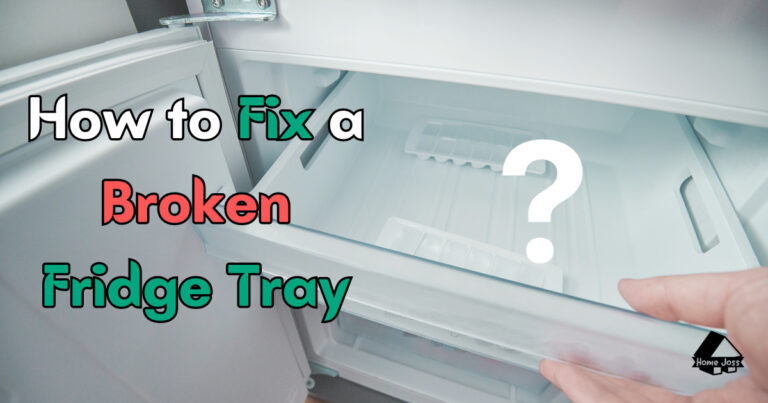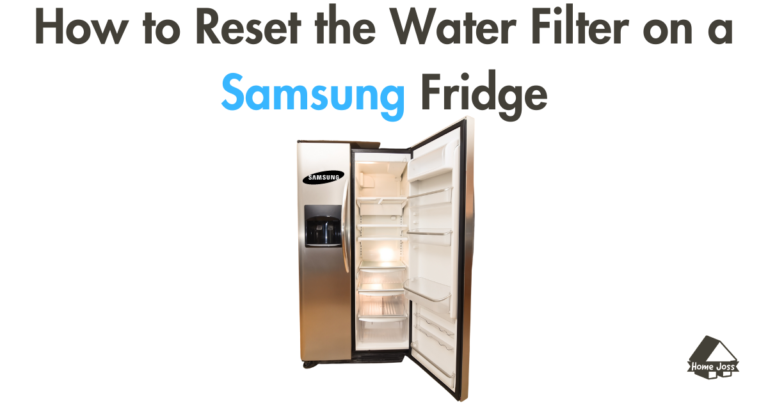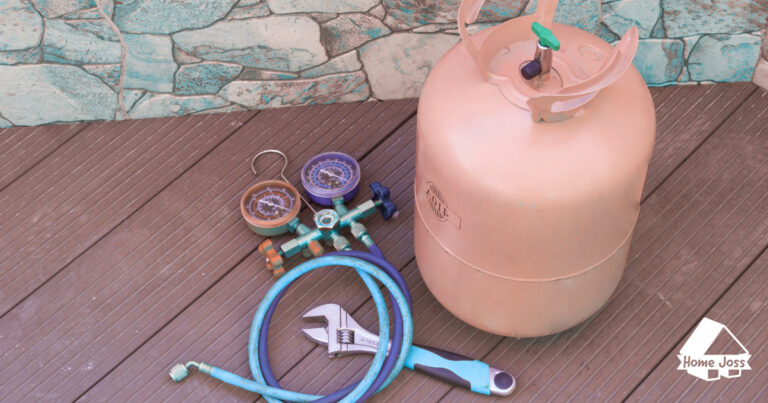Is your mini fridge not cooling properly? Don’t worry, we’ve got you covered. In this comprehensive guide, we will walk you through the steps to diagnose and fix the most common issues that can cause your mini fridge to lose its cooling capabilities.
Whether it’s dirty condenser coils, a faulty thermostat, or a malfunctioning fan, we will provide you with easy fixes that you can try at home. So, let’s get started and get your mini fridge back to its cooling best!

How to Fix a Mini Fridge That Won’t Get Cold?
Here are some steps that you can follow to fix this problem with your fridge.
- Clean condenser coils
- Test and replace the thermostat if faulty
- Check and replace condenser/evaporator fans if needed
- Examine and repair the compressor with professional help
- Replace damaged door gaskets
Here is a video that shows how to fix a mini fridge that is not getting cold enough.
Now I’m going in-depth on this topic so you can get a clear idea of what you can do at this time.
Condenser Coils Might be Dirty
One possible reason why your mini fridge is not cooling is if the condenser coils at the back of your fridge are dirty. When these coils get covered in dust, they have to work harder to keep your mini fridge cool, and sometimes, this may not be enough to achieve the desired temperature. Cleaning the coils is a simple process that can greatly improve the cooling efficiency of your mini fridge. Here’s what you need to do:
- Turn off the power to your mini fridge and carefully pull it out from the wall.
- Locate the condenser coils, which are usually located at the back of the fridge.
- If the coils are covered in frost, allow them to defrost naturally before proceeding.
- Once defrosted, use a damp cloth or a vacuum cleaner to remove any dust or debris from the coils.
- After cleaning, plug your mini fridge back in and monitor it over the next few hours to see if the cooling issue is resolved.
If your mini fridge still doesn’t cool, let’s move on to the next possible cause.
The Thermostat Might be Faulty
The temperature-control thermostat in your mini fridge plays a crucial role in maintaining the desired cooling level. If it becomes faulty, your fridge may stop cooling altogether. To check if the thermostat is the culprit, follow these steps:
- Turn off your mini fridge and locate the thermostat.
- Adjust the thermostat setting from the lowest to the highest and listen for a clicking sound. This sound indicates that the thermostat is functioning properly.
- If you don’t hear a clicking sound, use a multimeter to test the continuity of the thermostat. If there is no continuity, it means the thermostat is faulty and needs to be replaced.
- Order a replacement thermostat from the manufacturer and install it according to the provided instructions.
- After replacing the thermostat, turn on your mini fridge and check if it now cools effectively.
If the thermostat is not the issue, let’s move on to the next troubleshooting step.
Condenser Fan or Evaporator Fan Might be Defective
The condenser fan and evaporator fan in your mini fridge are responsible for circulating air and maintaining the desired temperature. If either of these fans is not working correctly, your fridge may struggle to cool. Let’s examine each fan separately:
Condenser Fan
The condenser fan blows warm air over the condenser coils to prevent them from frosting over. If the fan is defective or obstructed, the coils won’t stay cool, and your fridge won’t be able to reach the desired temperature. Here’s how to inspect the condenser fan:
- Turn off your mini fridge and locate the condenser fan, usually located at the back of the fridge.
- Remove any cover or obstruction that may be blocking the fan.
- Try manually moving the fan blades to ensure they rotate freely.
- Use a multimeter to test the continuity of the fan motor. If there is no continuity, the condenser fan needs to be replaced.
Evaporator Fan
The evaporator fan helps transfer cold air from the freezer compartment to the main fridge area. If this fan is faulty or obstructed, your mini fridge may struggle to cool effectively. Follow these steps to inspect the evaporator fan:
- Open the freezer compartment and listen for the sound of the evaporator fan running. If it’s not running or making unusual noises, it may be defective.
- Turn off your mini fridge and remove the cover from the evaporator fan.
- Check for any obstructions that may be preventing the fan from spinning freely.
- Use a multimeter to test the continuity of the fan motor. If there is no continuity, the evaporator fan needs to be replaced.
After inspecting and replacing any faulty fans, check if your mini fridge now cools properly.
Compressor Might be Faulty
The compressor is the heart of your mini fridge and is responsible for circulating refrigerant to ensure proper cooling. If the compressor is faulty, your mini fridge won’t cool effectively. Here’s how to inspect the compressor:
- Turn off your mini fridge and locate the compressor, usually at the back of the fridge.
- Use a multimeter to test the continuity of the compressor by placing the probes on the pins.
- If the multimeter test shows an open circuit, it means the compressor is faulty and needs to be replaced. This repair requires the expertise of a qualified technician.
If the compressor is not the issue, let’s move on to the next troubleshooting step.
Door Gaskets Might be Damaged
The door gaskets in your mini fridge are responsible for creating a tight seal to keep the cold air in and the warm air out. If the gaskets are damaged or worn out, your fridge may struggle to maintain the desired temperature. To check if the door gaskets are the problem, follow these steps:
- Inspect the door gaskets for any signs of damage or wear.
- Close the door while placing a piece of paper between the gaskets.
- Try pulling the paper out with the door closed. If it comes out easily, the gaskets are not sealing properly and need to be replaced.
- Order replacement gaskets from the manufacturer and follow the provided instructions to install them.
By replacing the damaged door gaskets, you can improve the cooling efficiency of your mini fridge.
FAQ about How to Fix a Mini Fridge That Won’t Get Cold
Can I repair my mini fridge’s compressor myself?
Repairing the compressor requires specialized knowledge and tools. It’s best to consult a qualified technician for this type of repair.
How often should I clean the condenser coils of my mini fridge?
It’s recommended to clean the condenser coils at least once every six months to maintain optimal cooling performance.
Can a mini fridge be overfilled with food and drinks?
Overfilling the mini fridge can obstruct the airflow, making it harder for the fridge to cool properly. It’s important to leave enough space for air circulation.
Is it normal for a mini fridge to make noise while running?
Some noise is normal, but if you notice any unusual or loud noises, it could indicate a problem. It’s best to have it checked by a professional technician.
How long should I wait before checking if the mini fridge is cooling after performing a repair?
Allow at least a few hours for the mini fridge to stabilize and reach the desired temperature before checking if the repair has been successful.
Can I use a hairdryer to defrost the condenser coils?
It’s best to allow the condenser coils to defrost naturally to avoid any potential damage. Using a hairdryer may cause thermal stress and damage the coils.
How do I know if the thermostat is the problem?
If your mini fridge is not cooling and you don’t hear a clicking sound when adjusting the thermostat, there’s a possibility that it’s faulty and needs to be replaced.
Can I replace the door gaskets myself?
Yes, you can replace the door gaskets yourself by ordering the appropriate replacements from the manufacturer and following the provided instructions.
Can I use a regular vacuum cleaner to clean the condenser coils?
Yes, a regular vacuum cleaner can be used to clean the condenser coils. However, make sure to use a soft brush attachment to avoid damaging the coils.
Why is it important to monitor the mini fridge after performing a repair?
Monitoring the mini fridge allows you to ensure that the repair has resolved the cooling issue and that the fridge is functioning properly.
A non-cooling mini fridge can be frustrating, but with the right troubleshooting steps, you can often diagnose and fix the issue yourself. By cleaning the condenser coils, checking the thermostat, inspecting and replacing faulty fans, testing the compressor, and replacing damaged door gaskets, you can improve the cooling performance of your mini fridge and extend its lifespan.
Remember, if you’re unsure about any repairs or if the issue persists after trying these troubleshooting steps, it’s always best to consult a professional technician for further assistance.






